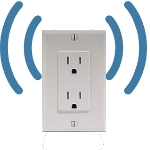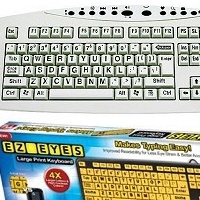
Powerful Fix for Weak WiFi Signal
By Bob Rankin
Wireless networking solutions are now common for home and office networks, but there are some circumstances in which WiFi is not enough. You may have ‘dead zones’ in your home or building where wireless signals are either very weak or cannot penetrate at all. In such cases, a cool technology called Powerline Ethernet can solve the problem. Read on to learn all about it…
What is Powerline Ethernet?
Are you struggling to get a decent wifi connection in the far corners of your house? Metal or concrete structures can block or weaken a wireless Internet signal. If your network includes Internet TV, network-attached storage devices, and other bandwidth-hungry wireless devices, they may also be competing for relatively limited wireless signal strength.
A wired network is one alternative, but running cables through ceilings or walls may not be practical. Fortunately, there is a networking solution that makes use of wiring that is already installed throughout your home or office. You may be surprised to learn that an internet connection can be carried over standard electrical power lines, but it’s true.
“Powerline Ethernet” is the generic term for this technology. But don’t confuse it with “Power over Ethernet,” a totally different technology that delivers electrical power to devices over Ethernet cables. Powerline Ethernet works by encoding Internet data into a carrier wave that piggybacks across an electrical power line at a frequency somewhat higher than that of the AC power that shares the line.
Implementing Powerline Ethernet is pretty simple and inexpensive. You need at least two Powerline Ethernet adapters: small devices that plug right into standard electrical outlets. One adapter needs to connect to your Internet router or cable/DSL modem, typically with a standard Ethernet cable. But you can also get Powerline adapters that connect wirelessly. Either way, you’ll also need to plug the adapter into an AC outlet. On the other end (the part of your home or office where you want to get an Internet connection), you plug the other adapter into the outlet, and connect it to a computer with an Ethernet cable. But again, you can go wireless if you like. If you need an Internet signal for a tablet, smartphone or other mobile device, you’ll need to use an adapter that offers the wireless option.




